Running a restaurant is no small feat, and revenue management can be one of the hardest aspects to handle.
Often, restaurateurs find themselves in a tight spot, grappling with thin profit margins and unpredictable market trends, making it challenging to maintain a steady flow of income.
If you are navigating these waters and wondering how to make every dollar count, you're in the right place.
In this article, we break down the five main elements that are crucial for successful restaurant revenue management.
So, let's dive in and explore them together.
Capacity Management
Managing the capacity of your restaurant is a critical element in driving revenue.
After all, the number of customers you can serve on a given day is directly linked to your potential profits, and how well you utilize your restaurant’s space determines how many guests you can handle.
One crucial factor in capacity management is your table layout.
We suggest creating a detailed layout plan, like the one shown in the image below, which gives a comprehensive view of your current table capacity and can reveal opportunities for using your space more efficiently.

Source: SmartDraw
Say you saw that you could fit one more table in. Let’s see the impact of adding this table to a hypothetical restaurant.
Consider a small restaurant with 10 tables. If each table on average brings in $37,57 per lunch and $91,85 per dinner, the total daily revenue from these tables amounts to $1.294,20.
Adding one more table, while seemingly negligible, can increase daily earnings to $1.423,62. Over a couple of months, this revenue adds up.
However, simply increasing the number of tables isn't the sole factor for greater restaurant capacity. Your focus should also be on table turnover.

Source: Tablein
Increasing the number of parties you serve per table, i.e. the table turnover rate, can ensure you use your tables to their full potential, whether you have 20 tables or 200.
While we can’t discuss table turnover in detail in this article, check out some tips for increasing it, or read our detailed guide on the topic.
In any case, the balance between the number of tables in a restaurant and the turnover rate will vary depending on the type of restaurant you operate.
For example, take a look at the table below comparing fast-food restaurants and fine-dining establishments.
| Aspect | Fast Food | Fine Dining |
| Seating Density | High | Low |
| Average Seats per Table | 2-4 | 4-6 |
| Typical Restaurant Capacity | 50-100 | 50-75 |
| Turnover Rate | 3-5 | 1-2 |
| Total Customers Served per Service | 150-500 | 50-150 |
| Focus | Speed & Volume | Atmosphere & Experience |
As you can see, fast food joints typically handle more volume with higher turnover rates. In contrast, fine dining focuses on exclusive, customer-centric experiences.
These differences don’t automatically mean fast food establishments rake in higher revenue.
Upscale dining can offset lower turnover with higher prices for a premium experience, maintaining a balanced revenue stream.
Effective capacity management is about finding the right balance—optimizing your space and service to enhance customer experience and increase revenue.
Time Management
While on the topic of turnover, effective time management is crucial for optimizing this metric and thus increasing revenue.
When considering time in a restaurant setting, it's about balancing how long guests spend dining and how swiftly your service operates, as both aspects are deeply intertwined.
Our estimations suggest that an ideal dining experience should not exceed two hours.
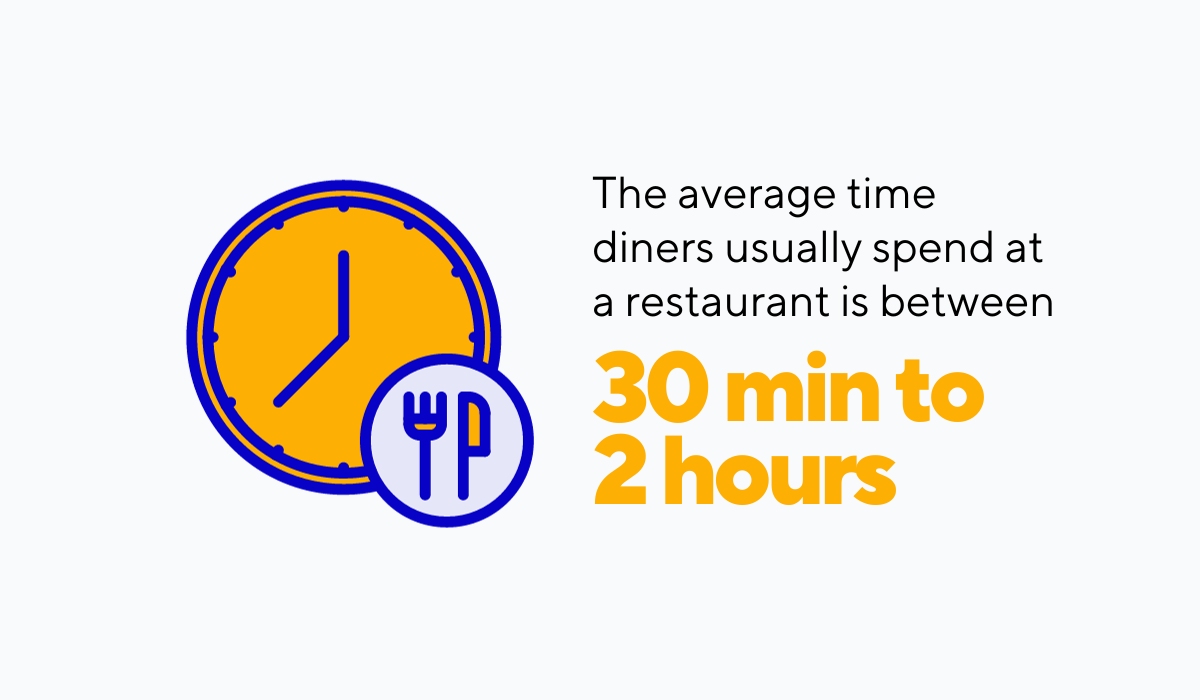 Source: Tablein
Source: Tablein
Why does this matter?
Think of it this way: every extra minute a guest spends at a table is a minute that another guest can't use that space.
Before we start blaming guests for taking their time dining, we need to consider how the restaurant’s service contributes to longer stay times.
Take into account that guests usually have to wait for several things:
- To be seated
- To have their order taken
- For their drinks and food orders to arrive
- To settle the bill
The actual eating time only starts after the first three waits.
According to Steven Brewer’s Quora answer, this problem is made more complex by several other factors.
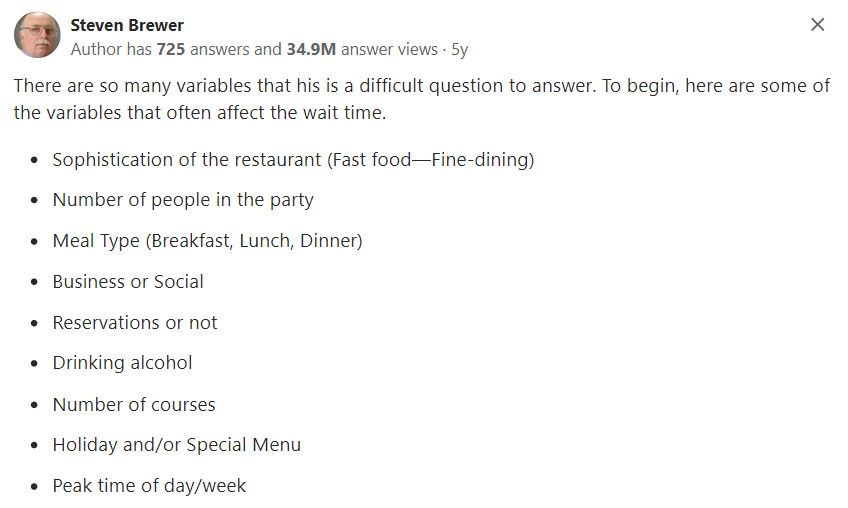
Source: Quora
For instance, a group of six with a reservation might not wait at all on a slow night. But a walk-in couple might wait an hour or longer on a busy night at a popular restaurant.
The key is to minimize all of these waiting periods. This can be done by training your staff to be more efficient and setting up policies like a time limit on how long a table can be occupied.
We suggest using modern automation tools like some of the ones shown below to your advantage as well.

Source: Tablein
Whether by speeding up reservations with reservation systems like our Tablein, speeding up staff with mobile POS systems, or reducing the time it takes to take orders and payments, automation can make the whole process smoother and quicker.
Overall, by improving internal efficiencies and using modern tools, you can serve more customers without rushing them, ultimately boosting your revenue.
Menu Management
We've now come to the menu, another crucial aspect of your restaurant's revenue management.
The menu needs careful handling as it can make or break your revenue management efforts.
First, take a good look at your existing menu. It's important to understand which items are popular and which aren't, and how your overall menu design influences consumer choices.
This is where menu engineering comes into play.
Start by looking at sales data and identifying your top-selling items. These are your crowd-pleasers and key revenue drivers. Make a note of them.

Source: Tablein
Generally, you'll find two categories of high-selling items on your menu.
There are the Plow Horses—the reliable sellers that may not bring in huge profits but are steady.
But we are looking for the Stars, which are the high-profit, high-popularity items. These are what you want to push more to boost revenue.
But how do you promote these items?
Well, that’s where the menu layout comes into play.
Take a look at the next image which shows two common menu designs and highlights the areas where customers' eyes usually go first.

Source: Tablein
Your goal is to strategically place your star items in these prime spots. This simple change can significantly increase their visibility and sales.
But what about the items that don't sell as well? Let’s look at them next.
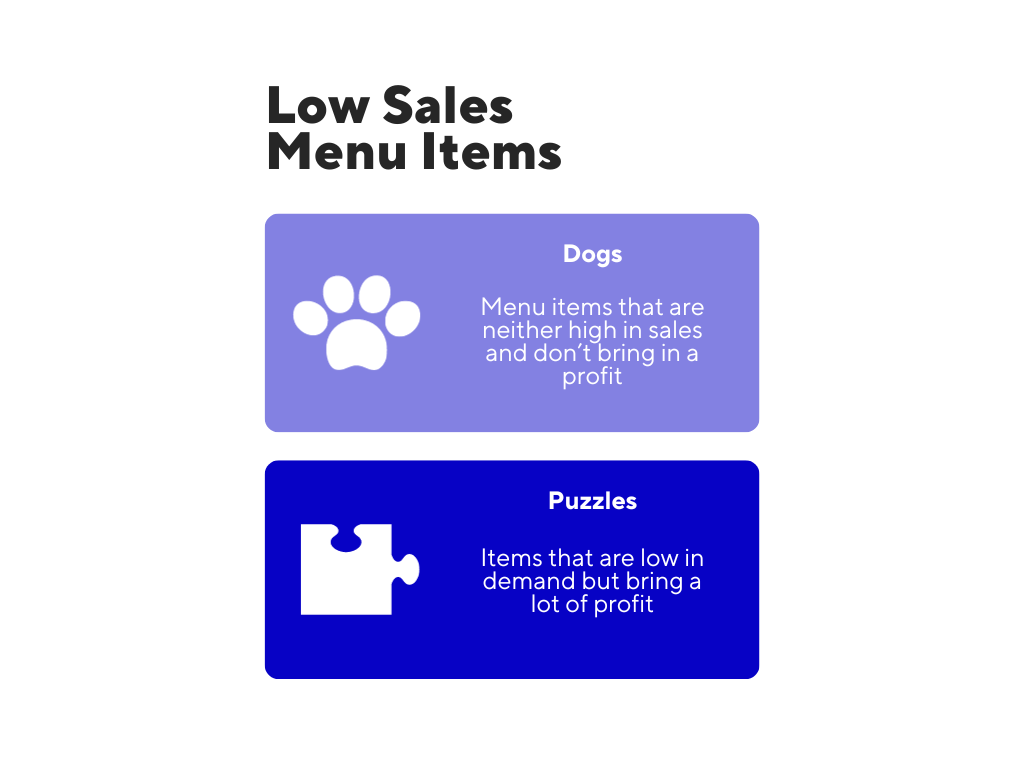
Source: Tablein
When it comes to the low-sales, low-profit items or the Dogs, you'll want to figure out why they're not popular. Is it the price, the taste, or something else?
Then there are the Puzzle items with potential that just haven't taken off yet. These might benefit from a bit more promotion.
Consider featuring Puzzles in the visible areas of the menu we mentioned previously or try including them in special promotional menus like the one shown in the next image.

Source: The Botanist
Including special event menus or seasonal menus is excellent for giving less popular items a moment in the spotlight.
This tactic not only diversifies the dining experience but also aids in better menu management.
By rotating items, you can keep the menu fresh and exciting, which can lead to increased sales and better customer satisfaction.
To sum up, smart menu management is all about understanding your customer's preferences, strategically placing items, and constantly tweaking your offerings to maximize both customer satisfaction and revenue.
Price Management
Restaurant revenue management means ensuring your restaurant remains profitable, and smart price management is key in this regard.
This practice is all about finding the sweet spot for your menu prices. They should be appealing enough for customers but also high enough to cover your costs.
Consider the statistic in the next illustration.

Illustration: Tablein / Data: 7Shifts
As shown, food cost is a big chunk of your operational expenses. If you don't get your pricing right, it can either eat into your profits or scare off customers with high prices.
Start by examining your menu again, this time focusing on pricing.
Look at each item and compare its selling price to the cost of making it. This step is necessary to understand how your pricing affects profitability.
Once you've done that, calculate the food cost percentage for each item.

Source: Tablein
Why is this important? It helps you determine whether you're pricing your items correctly.
If the percentage is too high, you're not making enough profit. If it's too low, you might be charging too much and risking losing customers.
With these percentages in hand, you can start optimizing your pricing management.

Source: Tablein
One straightforward way is to simply increase prices to bring in more revenue. But be cautious! Big price jumps can turn customers away.
To balance this out, think about how you can cut costs.
Maybe you can improve inventory tracking and reduce food waste by restocking only when necessary.
Or you can start carefully assessing ingredient quality to find the perfect balance between quality and low costs.
Also, consider promotional strategies. These can be great for attracting customers and strategically emptying your inventory.
Good deals you can implement include the following:
- Buy One, Get One
- Combo Deal
- Time-based discounts
Let's say you go for a combo deal like the one shown below.

Source: RedFlagDeals
Combo deals are a smart move because they encourage customers to buy more, which means you're selling more items in one go.
But remember, the bigger the combo, the more you have to watch your profit margins. You don't want to give away too much for too little.
In short, managing your menu prices is a balancing act. You need to keep an eye on your costs, understand your customers' price sensitivity, and adjust your strategy accordingly.
Get it right, and you'll see both your customers and your revenue happy.
Customer Management
Finally, let's talk about the backbone of your revenue: your customers.
Your customer management process might be the most important element of revenue management. If you get it wrong, you risk seeing customers leave, taking your revenue and reputation down with them.
So, what do customers care about? It boils down to the following key things:
- The ambiance and cleanliness of your restaurant.
- The quality of your food.
- The level of customer service they receive.
- Personalization in service and loyalty rewards.
A very important consideration and a big reason customers stop returning to a business is perceived indifference.
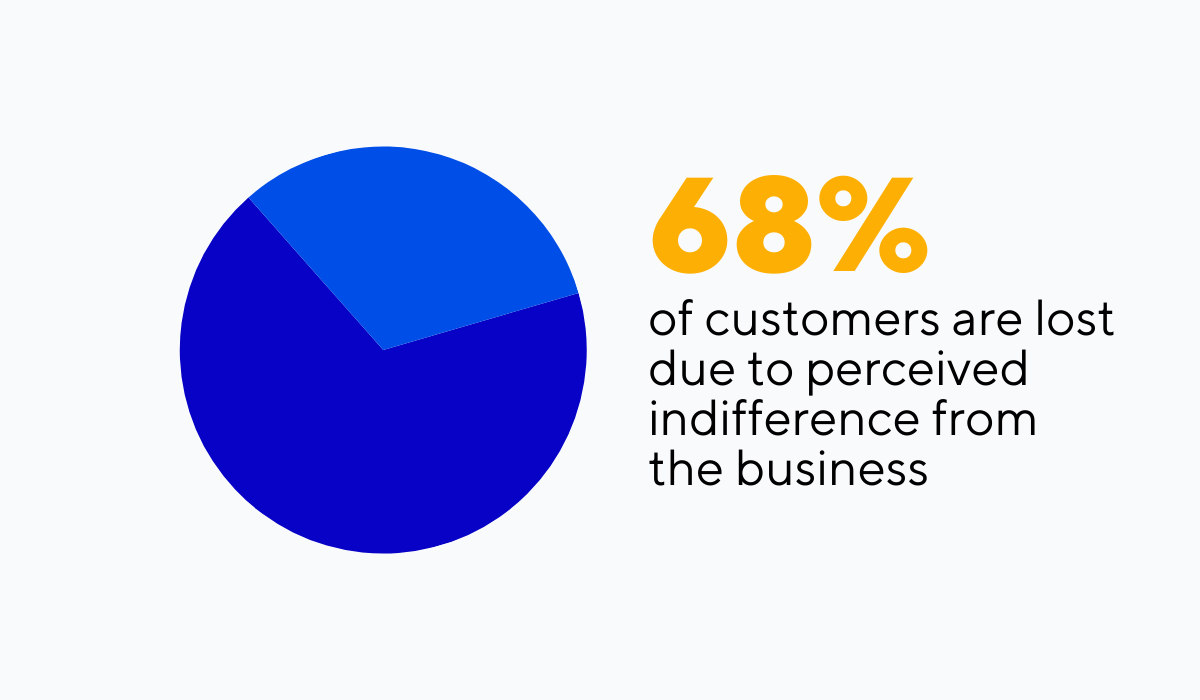
Illustration: Tablein / Data: Customer Thermometer
But what is perceived indifference? It can take many forms.
For example, it could be a waiter who ignores a table for 15 minutes only to reluctantly pick up their order. Or it can be a regular who gets their order wrong too many times and decides to eat elsewhere.
These experiences can quickly drive customers to dine elsewhere.
It's your job, and your staff's, to ensure each customer has a positive experience. It’s all about paying attention.
This can be achieved by keeping track of customer details and preferences.
Using a POS system or a dedicated restaurant CRM helps a lot. Through these tools, you can collect some data like the one illustrated below.
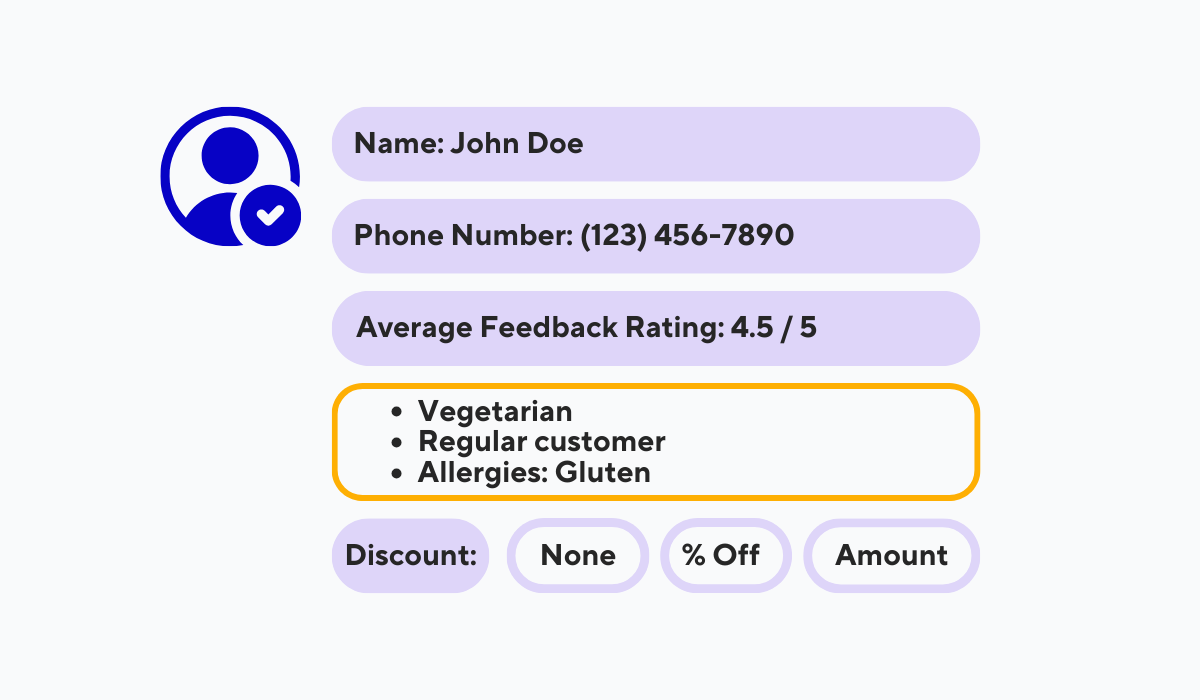
Source: Tablein
This data isn't just names and phone numbers. It can include anything from dining preferences, and visit frequency, to customer feedback.
With this info, you can personalize each customer’s service and offer loyalty benefits like discounts or more elaborate loyalty programs.
Listening to your customers is also key.
Make sure you have a way to collect feedback internally but don't ignore what guests have to say on review sites either. Take, for instance, a negative review like the one shown below.

Source: TripAdvisor
This message isn't just a complaint, but a chance to improve and reconnect with a dissatisfied customer.
Responding to such feedback and addressing concerns can turn a bad experience into an opportunity for growth and customer retention.
Do all of these customer management practices right, and you'll not only keep your current customers happy but also attract new ones, boosting your restaurant's success and revenue.
Conclusion
And that's a wrap on our journey through the essentials of restaurant revenue management.
We've covered a lot of ground, from capacity and time management to menu optimization and customer-oriented strategies.
We hope that this article has shed some light on the complexities of managing your restaurant's finances and offered practical strategies you can apply right away.
By implementing these tips, you stand to enhance your restaurant's efficiency, boost customer satisfaction, and, more importantly, increase profitability.
Remember, mastering revenue management is about making informed decisions that lead to sustainable growth.
Take these insights, put them into practice, and set your restaurant on the path to greater success!
Get a 30-day Exclusive Trial
As a Tablein blog reader, you’re eligible for an exclusive 30-day free trial to experience our simple reservation solution for your restaurant.
Enter your business email, and we’ll send you all the steps needed to create your account.
Share this
You may also like
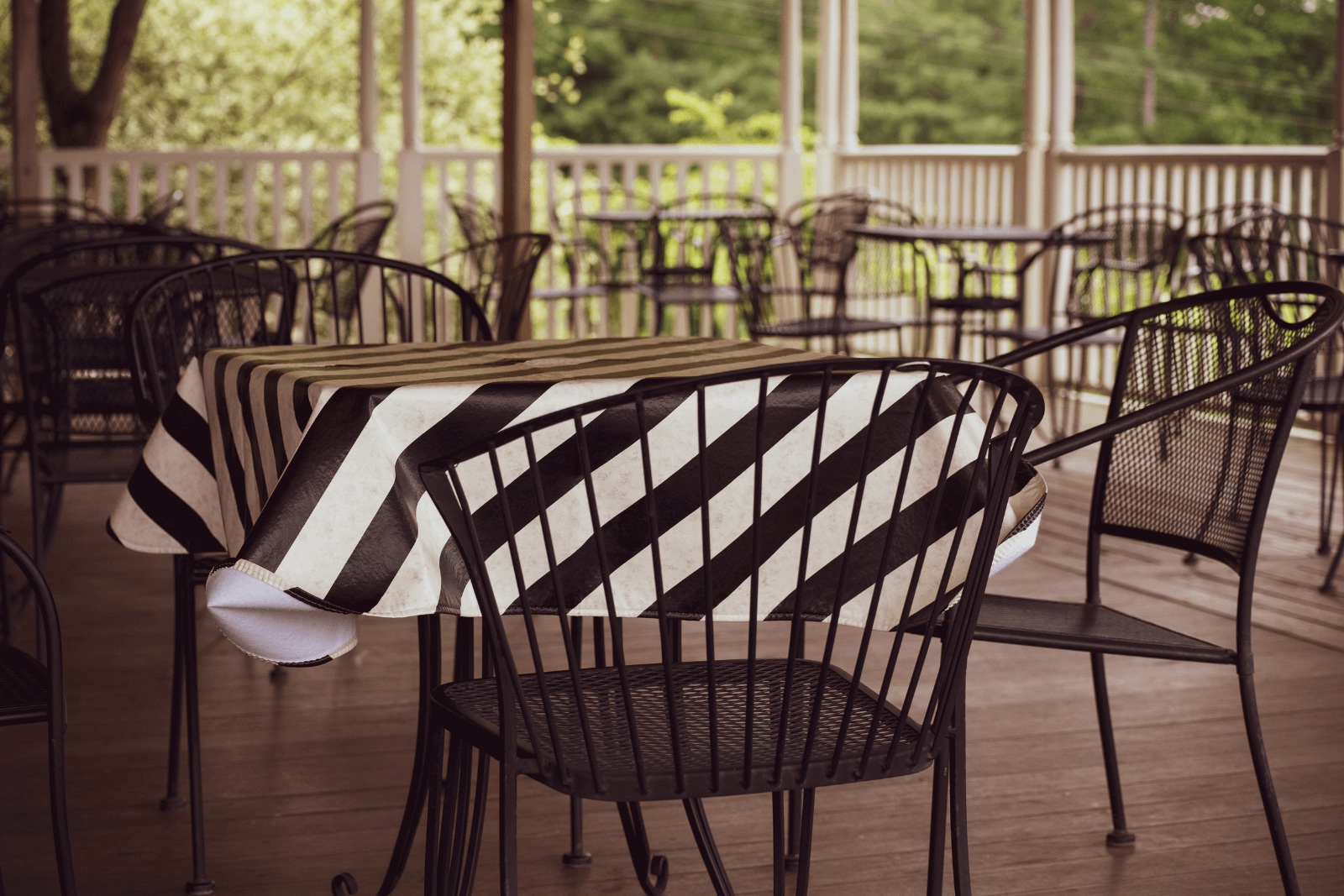
4 Ways to Increase Your Table Turnover With Restaurant Automation
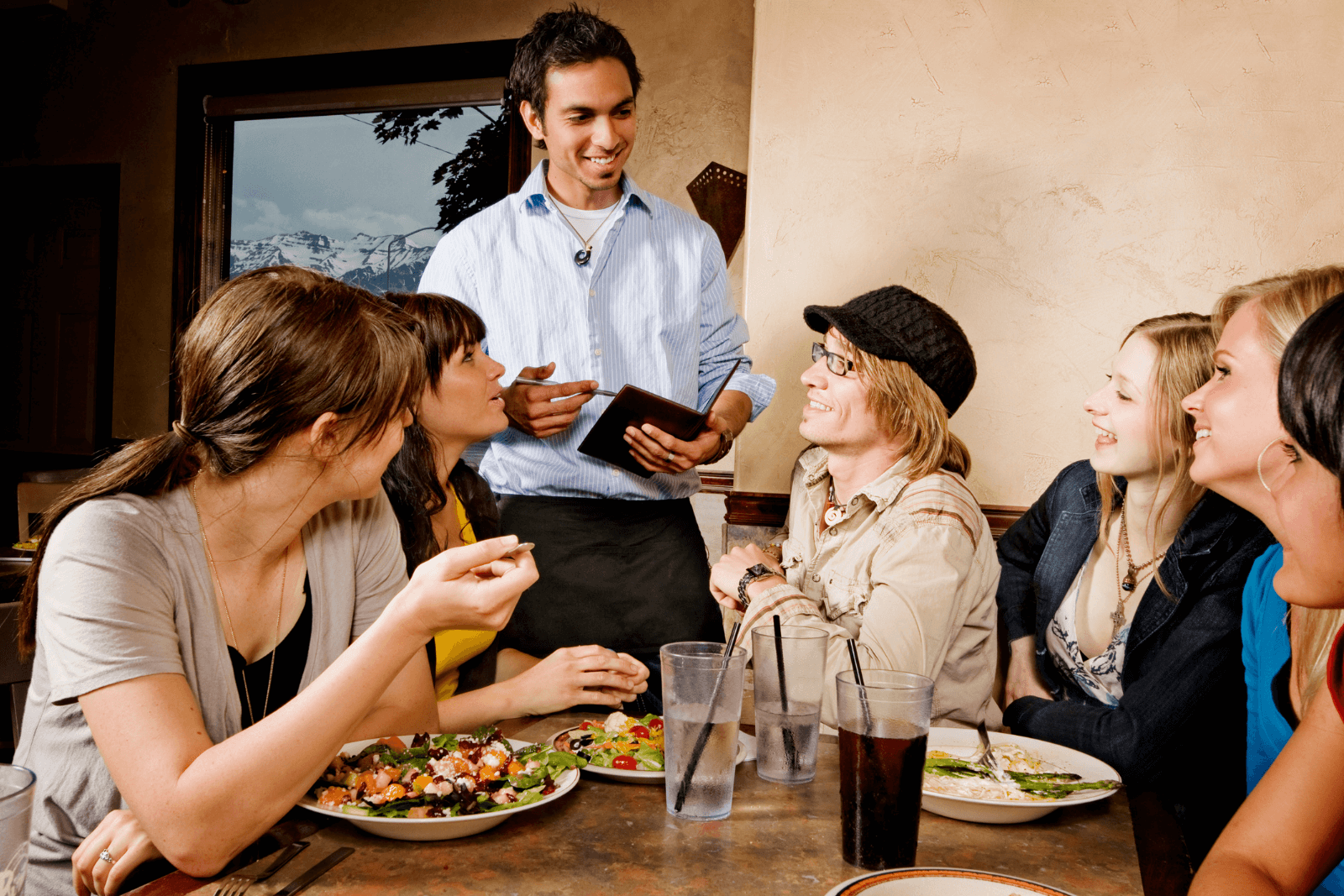
5 Effective Restaurant Revenue Management Strategies
